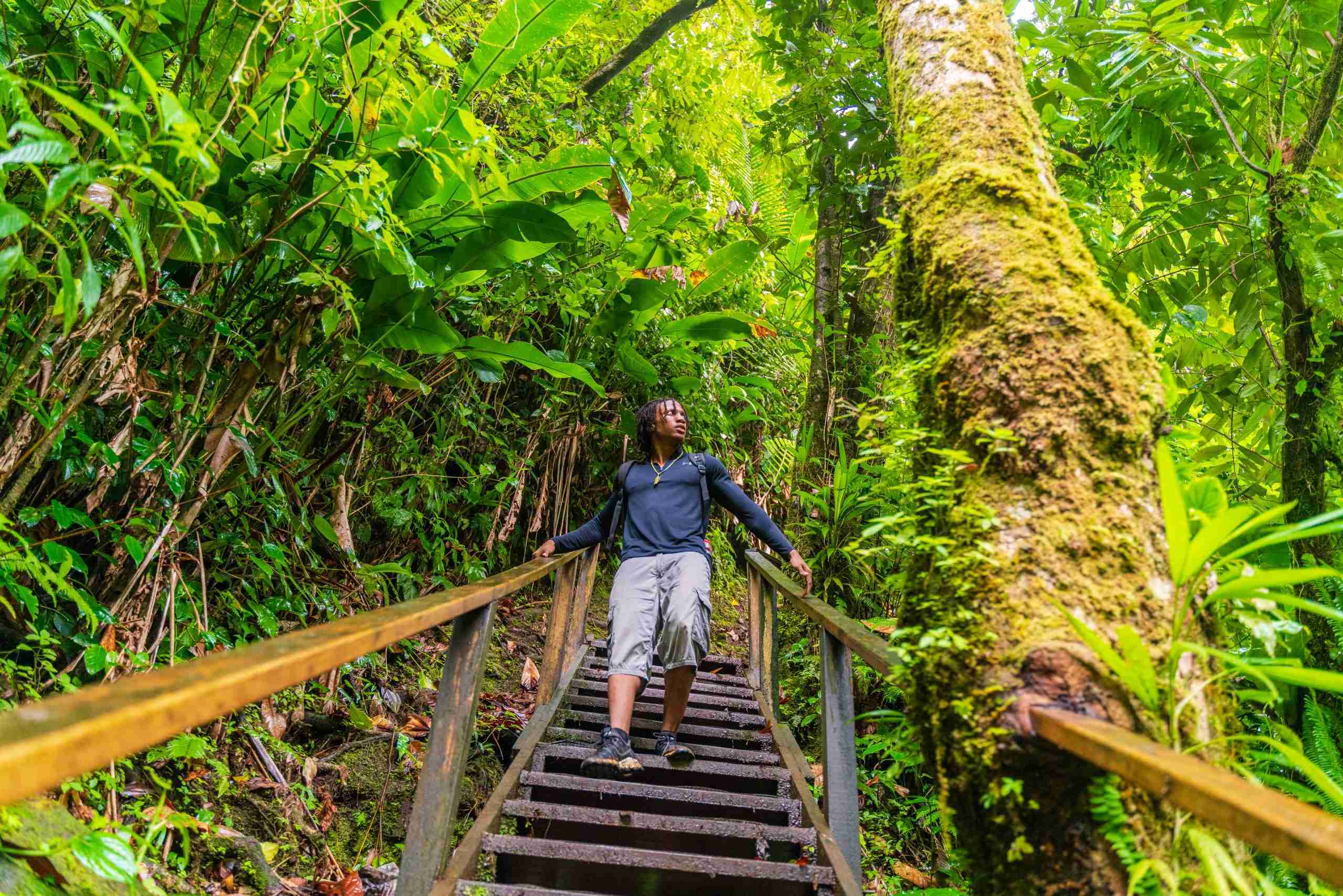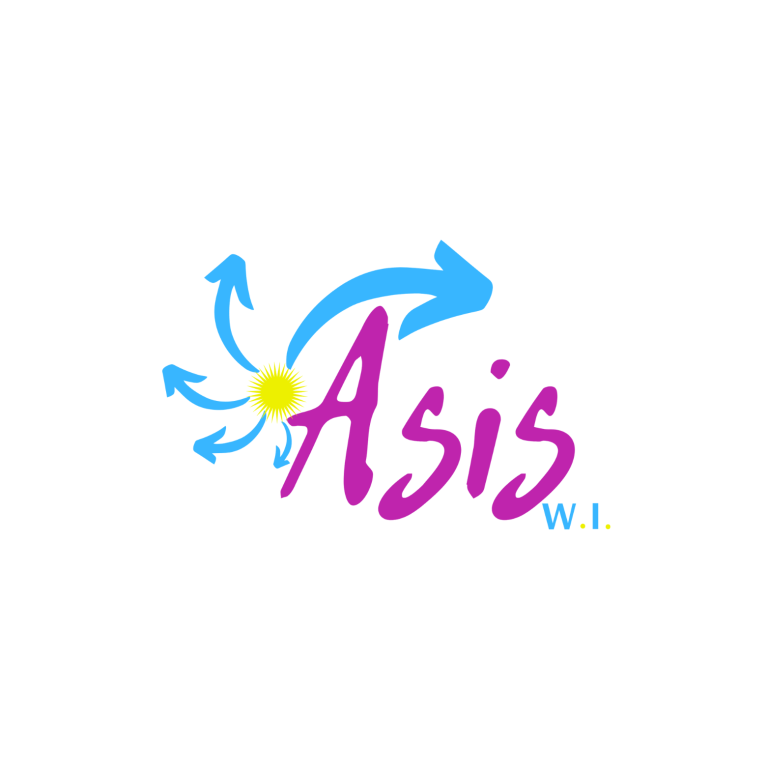TRINIDAD & TOBAGO
The Birthplace of Steelpan
Nestled in the heart of the Caribbean, the twin islands of Trinidad and Tobago are a vibrant tapestry of cultural diversity, pulsating rhythms, and breathtaking biodiversity. From the lively beats of calypso and soca to the kaleidoscope of ethnic influences that shape its identity, and the lush landscapes teeming with exotic flora and fauna, Trinidad and Tobago is truly a one-of-a-kind destination that captivates the senses.

Geographic and Geological Overview
A Geographic Snapshot

Size: Approximately 1,841 square miles
Capital: Port of Spain.
High Point: El Cerro del Aripo, at 940 meters (3,084 feet).
Population: About 1.4 million
Language: English, Trinidadian Creole
Vegetation: Rich biodiversity, including mangrove forests, tropical rainforests, and numerous species of flowering plants and trees.
Water Bodies: Notable for its rivers and small lakes, with important wetlands like the Caroni Swamp.
Agriculture: Key products include cocoa, coconuts, and citrus, supporting a vibrant local cuisine that blends African, Indian, and Creole influences.

Geological Features
Geology: Known for its Pitch Lake, the largest natural deposit of asphalt in the world, as opposed to active volcanoes.
Natural Wonders: Famous for the Asa Wright Nature Centre and the Caroni Bird Sanctuary, both of which highlight the island’s extensive natural beauty.
Cultural Tapestry
Calypso and Soca: The Heartbeat of the Islands
Trinidad and Tobago is renowned as the birthplace of calypso, a musical genre that originated in the sugar cane fields as a form of expression for enslaved Africans. Over the years, calypso evolved into soca, a lively fusion of soulful calypso rhythms and upbeat sounds. The islands come alive during the world-famous Carnival, where vibrant costumes, infectious music, and spirited dancing take center stage. It’s a celebration like no other, where the entire nation moves to the rhythm of joy and revelry.

A Symphony of Celebrations
The heart of Trinidad and Tobago’s cultural vibrancy is best experienced through its festivals.
Carnival, the most illustrious of these, is a spectacular display of elaborate costumes, Soca music, and exuberant parades. It encapsulates the spirit of the islands, merging African rhythms with Indian melodies to create a unique cultural phenomenon.
Other significant celebrations include Diwali, showcasing the country’s large Indo-Trinidadian community, and Emancipation Day, which honors the rich African heritage.

Expressions of a Rich Heritage
Visual arts in Trinidad and Tobago tell stories of historical events and cultural evolution. The thriving art scene features both traditional and contemporary styles, reflecting the islands’ historical ties and current realities. Local crafts, including basket weaving and pottery, use indigenous materials and techniques passed down through generations, showcasing the islands’ commitment to preserving their cultural legacy.

Local Cuisine
TT’s Cuisine Highlight
The cuisine in Trinidad and Tobago is as diverse as its people, characterized by bold flavors and spices that reflect the Indian, African, Creole, and Amerindian influences.
Signature dishes like doubles, a curried chickpea snack, and pelau, a one-pot rice dish with caramelized meat, are staples of the local diet

Pelau

Doubles

Curried chickpea snack
Video Authenticity Note:
The upcoming video is presented at real-time speed, showcasing the natural pace of the chef. Observe how quickly and adeptly he prepares doubles.
This display isn’t merely for speed; it’s an integral part of street food culture, highlighting the skill and craftsmanship that each doubles embodies.
Economy and Infrastructure
Pillars of Progress
Trinidad and Tobago’s economy is distinguished by its strong industrial sector, with petroleum and natural gas being the cornerstone of its economic activities. This dual-island nation is one of the leading exporters of oil and gas in the Caribbean, fostering a landscape ripe with opportunities for both local and foreign investments.
The infrastructure in Trinidad and Tobago is among the most developed in the Caribbean, bolstered by a network of well-maintained roads, an expanding public transportation system, and modern telecommunications facilities. The nation’s commitment to improving its infrastructure is evident in its efficient transport systems and ongoing projects aimed at enhancing energy efficiency and public utilities.
Moreover, Trinidad and Tobago is strategically positioned as a financial hub in the Caribbean, with a dynamic financial services sector that includes banking, insurance, and investment opportunities. This economic environment is supported by a framework of policies designed to encourage business growth, making it an attractive destination for entrepreneurs and investors looking to tap into the Caribbean and Latin American markets.
Historical Insights
Tracing the Legacy of Trinidad and Tobago
Trinidad and Tobago boasts a rich and multifaceted history that has shaped its modern identity. Before European colonization, these islands were inhabited by indigenous peoples such as the Arawaks and Caribs. The arrival of Christopher Columbus in 1498 marked the beginning of Spanish rule, which lasted until the British took control in the late 18th century.
The colonial period saw Trinidad and Tobago become a melting pot of cultures due to the importation of enslaved Africans, the arrival of indentured laborers from India, and settlers from other parts of Europe and the Middle East. This diverse genetic and cultural infusion has left a lasting imprint on the nation’s social fabric.
Significant in its historical chronicle is the cocoa boom of the 19th century, which propelled the economy and shaped much of its rural landscapes. Post-emancipation, the islands saw major shifts with the end of slavery and the new wave of indentured servitude from India, influencing everything from agriculture to cultural festivals.
The 20th century was marked by the fight for independence from British rule, which was achieved in 1962. Since independence, Trinidad and Tobago has developed rapidly, driven by oil and gas production, and is now known for its vibrant cultural scene and as a leader in Caribbean economic development.
What Makes Trinidad & Tobago So Unique
Cultural Diversity: Trinidad and Tobago is a melting pot of cultures, including influences from African, Indian, European, and Amerindian communities .
Carnival: Known globally for its vibrant, colorful Carnival, which is one of the most celebrated on the planet, showcasing elaborate costumes and Soca music .
Natural Beauty: Home to some of the most beautiful beaches in the Caribbean and the famous Buccoo Reef, a spectacular coral reef .
Pitch Lake: The largest natural deposit of asphalt in the world, located in La Brea in southwest Trinidad .
Ecological Diversity: Contains several environmentally protected areas and wildlife sanctuaries, including the Asa Wright Nature Centre .
Steelpan: The birthplace of steelpan, the only acoustic musical instrument invented in the 20th century .
Diwali Celebrations: Hosts one of the world’s most spectacular Diwali festivals, reflecting its strong Indian heritage .
Cuisine: Offers a unique culinary landscape that blends African, Indian, and Creole influences, famous for dishes like doubles and roti .
Literary Heritage: Birthplace of two Nobel Prize-winning authors, V.S. Naipaul and Derek Walcott, showcasing its rich literary tradition .
Economic Hub: Serves as a financial and industrial hub in the Caribbean, particularly known for its oil and natural gas industries .
Events
Rhythms of Trinidad & Tobago
Trinidad and Tobago’s cultural vibrancy and ethnic diversity shine through its numerous festivals and musical traditions, influenced by its African, Indian, Spanish, and British heritage.
- Carnival (February/March): Celebrated just before Lent, Trinidad’s Carnival is famous worldwide for its colorful parades, elaborate costumes, and Soca music.
- Tobago Jazz Experience (April): A week-long celebration featuring local and international jazz artists.
- Buccoo Goat Race Festival (April): Unique to Tobago, this event occurs on Easter Tuesday, blending sport with festive cheer.
- Indian Arrival Day (May): Commemorates the arrival of the first Indian indentured laborers with music, dance, and reflection.
- Tobago Heritage Festival (July/August): Showcases the island’s rich customs through traditional dance, music, storytelling, and food.
- Great Fete Weekend (July/August): A beach party series in Tobago known for its vibrant nightlife and live music.
- Emancipation Day (August): A national holiday celebrating African heritage and the abolition of slavery, marked by street parades and cultural performances.
- Independence Day (August): Celebrates the country’s independence from British colonial rule in 1962 with fireworks, parades, and patriotic events.
- Diwali (October/November): The Hindu festival of lights, observed with the lighting of deyas, cultural programs, and fireworks.
- Parang Season (December): Features traditional Christmas music from Venezuela and Trinidad, focusing on community gatherings and live performances.
















































